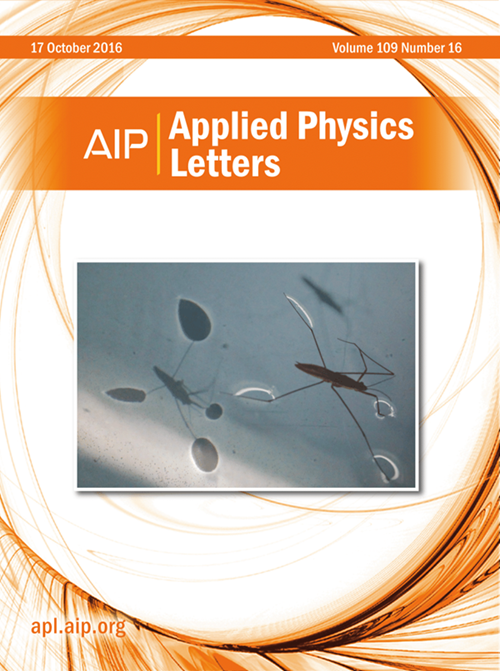用于穿戴式运动识别的机器学习耦合高灵敏度和鲁棒性聚偏氟乙烯薄膜传感器
IF 3.5
2区 物理与天体物理
Q2 PHYSICS, APPLIED
引用次数: 0
摘要
在健康监测和外骨骼机器人领域的新兴应用导致了对高性能身体运动识别的迫切需求。然而,现有的运动识别系统由于成本高、结构复杂、精度低、可靠性差等缺点而面临挑战。本研究展示了一种灵活、灵敏、鲁棒的聚偏氟乙烯(PVDF)复合薄膜传感器,该传感器具有增强的压电极化效应,可用于高效的人体运动识别。该薄膜传感器具有27.06 KPa−1的高灵敏度和8.7 V的压电电压,以及0.01 ~ 3 MPa的宽检测范围和3万次加载循环后5.6%的低衰减,优于许多已报道的压电传感器和商用SDT1-028K传感器。通过第一性原理计算,我们发现在铝锌氧化物(AZO)中掺杂Cu有利于压电激发电荷的转移,增强了Cu-AZO/PVDF杂化结构的电子转移能力,从而增强了极化效应和压电性能。利用机器学习耦合多传感器网络输入鞋垫和膝盖的压电信号,对六种人体动作的总体分类率达到95.54%。本文章由计算机程序翻译,如有差异,请以英文原文为准。
Machine learning coupled highly sensitive and robust polyvinylidene fluoride thin-film sensor for wearable motion recognition
Emerging applications in the field of health monitoring and exoskeleton robotics have led to an urgent demand for high-performance body motion recognition. However, the available motion recognition systems face challenges due to shortcomings including high cost, complex structure, low accuracy, and poor reliability. This work demonstrates a flexible, sensitive, and robust polyvinylidene fluoride (PVDF) composite thin-film sensor with enhanced piezoelectric polarization effect for highly efficient human motion recognition. The thin-film sensor presents a high sensitivity of 27.06 KPa−1 and piezoelectric voltage of 8.7 V, together with a broad detection range of 0.01–3 MPa and low attenuation of 5.6% after 30 000 loading cycles, which are superior to those of many of the reported piezoelectric sensors and commercial SDT1-028K sensor. Employing first-principles calculations, we show that doping of Cu in aluminum zinc oxide (AZO) facilitates the transfer of piezoelectrically excited charges and enhances the electron-transferring capacity of the Cu-AZO/PVDF hybrid structure, leading to stronger polarization effect and enhanced piezoelectric properties. A machine learning coupled multi-sensor network is engaged with inputting piezoelectric signals from insoles and knees, exhibiting excellent overall classification rate of 95.54% for six human motions.
求助全文
通过发布文献求助,成功后即可免费获取论文全文。
去求助
来源期刊

Applied Physics Letters
物理-物理:应用
CiteScore
6.40
自引率
10.00%
发文量
1821
审稿时长
1.6 months
期刊介绍:
Applied Physics Letters (APL) features concise, up-to-date reports on significant new findings in applied physics. Emphasizing rapid dissemination of key data and new physical insights, APL offers prompt publication of new experimental and theoretical papers reporting applications of physics phenomena to all branches of science, engineering, and modern technology.
In addition to regular articles, the journal also publishes invited Fast Track, Perspectives, and in-depth Editorials which report on cutting-edge areas in applied physics.
APL Perspectives are forward-looking invited letters which highlight recent developments or discoveries. Emphasis is placed on very recent developments, potentially disruptive technologies, open questions and possible solutions. They also include a mini-roadmap detailing where the community should direct efforts in order for the phenomena to be viable for application and the challenges associated with meeting that performance threshold. Perspectives are characterized by personal viewpoints and opinions of recognized experts in the field.
Fast Track articles are invited original research articles that report results that are particularly novel and important or provide a significant advancement in an emerging field. Because of the urgency and scientific importance of the work, the peer review process is accelerated. If, during the review process, it becomes apparent that the paper does not meet the Fast Track criterion, it is returned to a normal track.
 求助内容:
求助内容: 应助结果提醒方式:
应助结果提醒方式:


